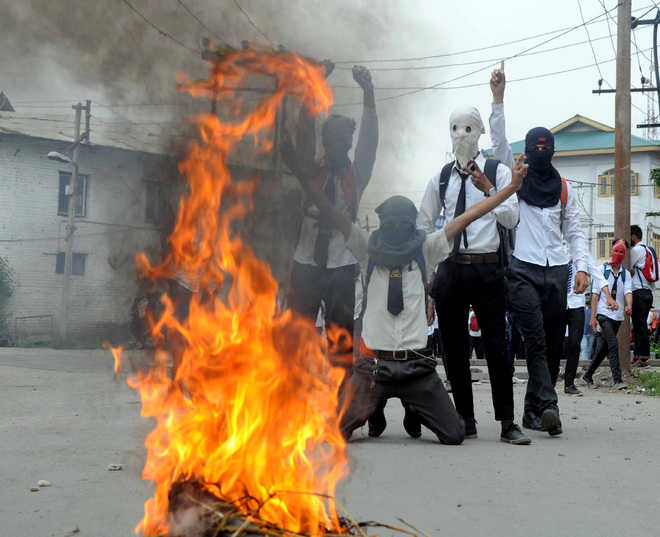After the April 9 “human shield” episode for which Major Leetul Gogoi was rewarded with the Army Chief’s commendation certificate, the ire against the Indian Army has risen manifold. It is a repulsive celebration of hate. It seems to be in competition with hate-mongering aired by TV channels against Kashmiris.
This is fraught with serious consequences, which perhaps neither side has calculated. Most of the Kashmiris do understand that the Indian Army landed when the state was invaded by Pakistani troops in 1947. Locals assisted the Army in pushing back the invaders, and exposing and decimating the Pakistan-executed Operation Gibraltar in 1965.
The 1971 Indo-Pak war left a deep impact on the Kashmiri mind that realised that Pakistan was a loser. Pakistan had lost East Pakistan. Psychologically, the slogan “Kashmir banega Pakistan” lost all sheen. That’s why the “azadi slogan” was invented by the ISI to regain credibility among Kashmiris.
Although even now there is dependence on Pakistan for money, arms and training, but the new generation of militants is more hardened and convinced that it can achieve with stones what previous generations and Pakistan could not deliver through guns and the mini-war of Kargil in the summer of 1999.
The Indian Army is dealing with this deeply radicalised generation, which is unafraid of the consequences. A soldier is seen, and to some extent that’s true too, as the face of India, which the new generation thinks has to be hit, and hit hard.
This hate borders on paranoia and it has virtually given a clean chit to Kashmiri Muslim politicians, who led the Valley into the deep gorge of uncertainty and darkness. The politicians of the mainstream who are more guilty than separatists have become part of this intense campaign to save themselves from public ire. This demonisation is not without a reason. The political system failed because of the half-baked democracy in the Valley. Delhi’s repeated mistakes of popping up regimes lacking legitimacy on the ground only made matters worse. Having a Kashmiri Muslim face as Chief Minister was the only goal. It liberally funded these regimes and ignored their high corruption. The revolt against this political manoeuvering after the 1987 Assembly elections gradually turned against India because Delhi had partnered and patronised these electoral frauds. Towards the end of 1989, the Army was sent to the scene to fight terrorists. The law and order and governance system had collapsed because the government was in collusion with subversive elements.
The Army had to step out to restore the authority of the system. It succeeded. But then it outstepped its lines – its prolonged presence and greater interaction with the civilian population had a negative impact. There were excesses —- some genuinely reported, other were simply made-up stories. But they were enough to stir passions. There were some gruesome realities like massacres, fake encounters and mysterious disappearances. A stage came when people cheered dismantling of the Army bunkers. With stone-throwing youth intervening at encounter sites, a situation of direct confrontation has arisen. The civilian population has stepped onto a dangerous terrain of direct confrontation with soldiers. It is in such situations that the soldiers tend to look for “innovative ways” to save the situation from worsening.
The Kashmir problem is not the Army’s creation. Now, it is seen as part of the problem. And the mutual demonisation is preparing the ground for an escapable catastrophe.
Is Kashmir headed towards major catastrophe?





